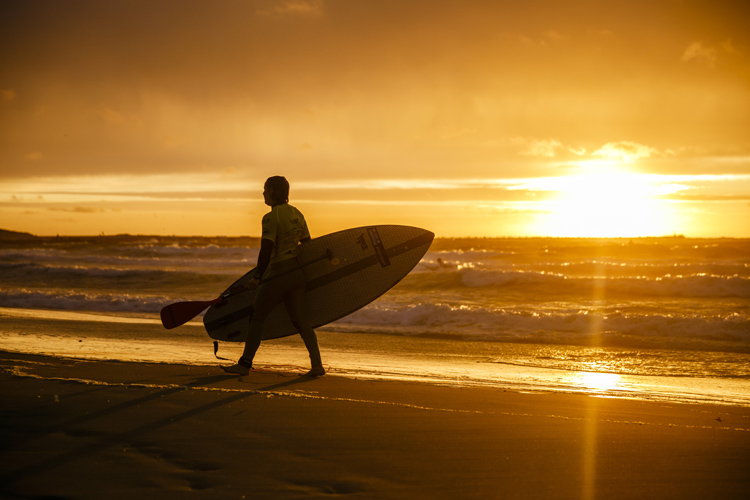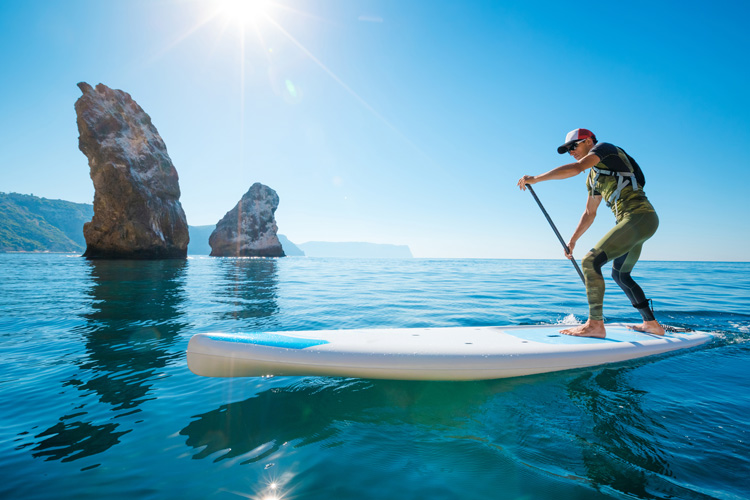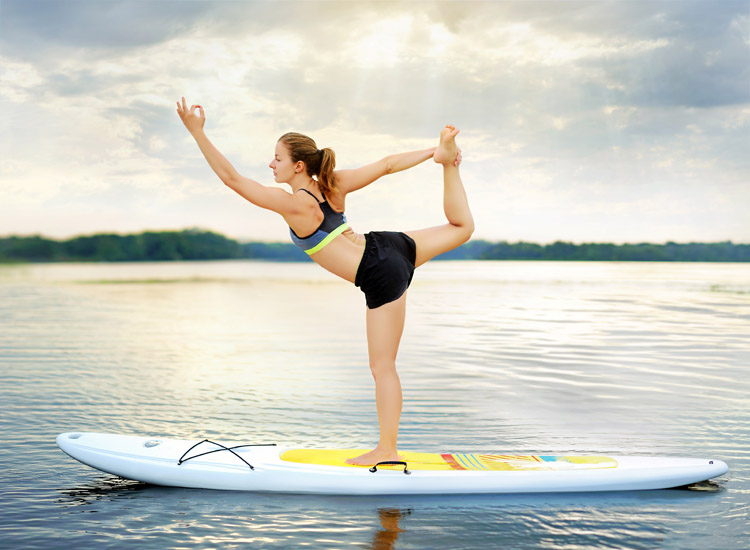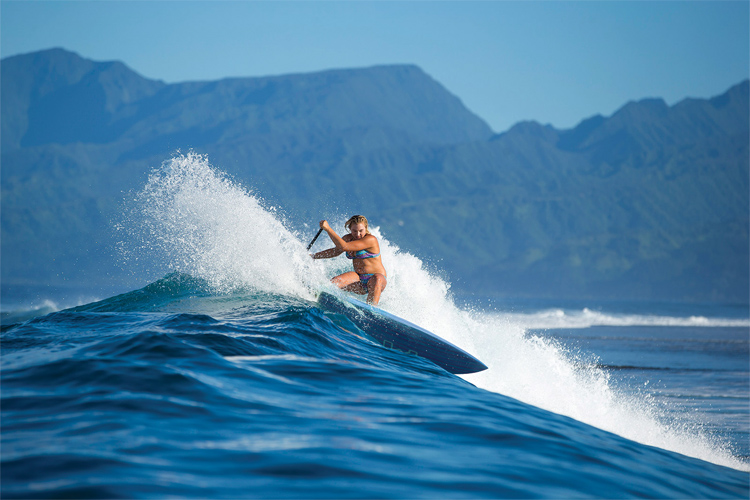Stand-up paddleboarding is an outdoor water sports activity where a rider stands up on a large board and uses a paddle to move through the water.
Stand-up paddleboarding, also known by the acronym SUP, is one of the fastest-growing boardsports in the world.
SUP is a subclass of paddleboarding, a broader concept that also includes the use of arms while kneeling, lying, or standing on a narrow and long paddleboard to move around in the water.
Paddleboarding has its roots in Africa, South America, and the ancient Polynesian culture.
Historians believe that 16th-century natives used wooden paddleboards to move from one place to another and catch waves for fun.
Tom Blake is the pioneer of modern paddleboard construction.
In the 1920s, the Americans helped restore old Hawaiian boards; a decade later, Blake was already building hollow boards with half the weight of the historical models.
Between the 1930s and the early 1990s, paddleboards remained in the shadows of surfboards and surfing as smaller and lighter boards took over the market.

The Rebirth of Paddleboarding
The rebirth of paddleboarding occurred after several successful and highly attended long-distance races that put the sport in the spotlight.
Today, the paddleboard ranges between 12 and 20 feet in length; it is about 20 inches wide and weighs between 20 and 40 pounds.
Stand-up paddleboarding quickly emerged as an accessible alternative, especially for (older) surfers who have never given up on catching and riding waves.
The industry quickly answered with the launch of hundreds of more or less surfboard-inspired models, which could be used in various situations.
Brands that until recently were locked up in niche windsurfing and kiteboarding markets found new opportunities in SUPing.
Today, SUPing can be enjoyed in flat oceans, surf zones, lakes, rivers, canals, inland waterways, and even large swimming pools.

SUP For All
With the advent of inflatable stand-up paddleboards, the sport became even more popular and accessible - the SUP board now fits in a backpack.
Stand-up paddleboarding is not only an excellent workout and pastime, but it can also be a smart means of transportation, allowing you to carry small bags and objects onboard.
SUPing also opened new and unexpected opportunities outside of surfing.
Stand-up paddleboards are also used by yoga, pilates, fishing, and swimming enthusiasts to perform specific training.
There are several types of SUP boards for different purposes. You'll find models for racing, surfing, flatwater cruising, and crossover versions.
The size of a stand-up paddleboard ranges between 9 and 13 feet.
The paddle has three components - the handle, the shaft, and the blade - and ranges between 6 and 12 inches.

SUP: An Ever-Growing Competitive Water Sport
Today, stand-up paddleboarding is mainly a recreational activity, but there are also several competitions taking place all over the world.
The International Surfing Association (ISA) organizes the World StandUp Paddle and Paddleboard Championship (WSUPPC).
The event features four SUP divisions (SUP Surfing, SUP Racing Technical, SUP Racing Sprint, and SUP Racing Distance) and two paddleboarding categories (Paddleboard Racing Technical and Distance).
Like a surfboard, the SUP rider stands in the upright position, centered on the board.
Then, the user plants the blade fully in the water before starting to pull. This applies to every stroke they take.
Because SUPers can catch waves sooner than anybody else, they are invited to follow an informal code of conduct that promotes a safe and healthy environment in the lineup.
In 2008, the United States Coast Guard (USCG) officially classified stand-up paddleboards as vessels, but they must give way to motor-powered boats and large watercraft.
